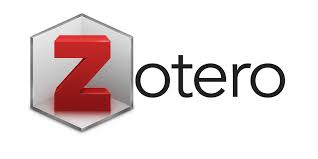Kemampuan Literasi Matematis Mahasiswa Melalui Model Problem-Based Learning Menggunakan Klinometer
DOI:
https://doi.org/10.29240/ja.v3i1.3100Keywords:
Literacy, Problem Based Learning, ClinometerAbstract
This study aims to determine students' mathematical literacy skills through problem-based learning using a clinometer. This research method is quasi-experimental with the research design used is one group pretest-posttest analysis on the initial test obtained results which indicate that the two classes are normally distributed and homogeneous, this means that the two classes are in the same condition or circumstances, namely the ability mathematical literacy so that it can be treated. The final test is also normally distributed and homogeneous, but there is an average difference from the aspect of mathematical literacy skills taught using problem-based learning and conventional learning models. Then the analysis was carried out through the one-way ANOVA hypothesis test, it was obtained that there were significant differences in the two classes. Then proceed with the Scheffe test to see the differences between the two classes, it turns out that there are differences in students' mathematical literacy abilities in the experimental class and the control class. This means that the mathematical literacy ability of the problem-based learning model using a clinometer is higher than the mathematical literacy ability of students using conventional learning models.
Downloads
References
Aini, I.N. (2013). Meningkatkan Literasi Matematika Mahasiswa Melalui Pendekatan Keterampilan Proses Matematis: Studi Kuasi Eksperimen pada Mahasiswa Madrasah Tsanawiyah. Tesis pada SPS UPI Bandung: tidak diterbitkan.
Carter, S. (2010). Infusing math with literacy. Reading today in the classroom.
Fatima, Fatia. (2012). Kemampuan Komunikasi Matematis dan Pemecahan Masalah Melalui Problem-Based Learning. http://journal.uny.ac.id.
OECD. (2019). Programme for International Student Assessment (PISA) 2018 Results in Focus- What 15-year-olds know and what they can do with whatthey know. OECD Publishing.
Ojose, B. (2011). Mathematics literacy: Are we a bleto putthe mathematics we learninto everyday use? Journal of Mathematics Education (4)1, pp. 89-100.
Shoimin, Aris. (2014). Model Pembelajaran Inovatif dalam Kurikulum 2013. Jakarta: Ar-ruzz media.
Widyantini., Sigit. (2010). Pemanfaatan Alat Peraga dalam Pembelajaran Matematika SMP Diklat SMP Jenjang Dasar. P4TK Matematika. Yogyakarta.
Downloads
Published
Issue
Section
Citation Check
License
Authors who publish with ARITHMETIC: Academic Journal of Math agree to the following terms:
- Authors retain copyright and grant the journal right of first publication with the work simultaneously licensed under a Creative Commons Attribution-NonCommercial-ShareAlike 4.0 International License (CC BY-NC-SA 4.0) that allows others to share the work with an acknowledgment of the work's authorship and initial publication in this journal.
- Authors are able to enter into separate, additional contractual arrangements for the non-exclusive distribution of the journal's published version of the work (e.g., post it to an institutional repository or publish it in a book), with an acknowledgment of its initial publication in this journal.
- Authors are permitted and encouraged to post their work online (e.g., in institutional repositories or on their website) prior to and during the submission process, as it can lead to productive exchanges, as well as earlier and greater citation of published work (See The Effect of Open Access).







